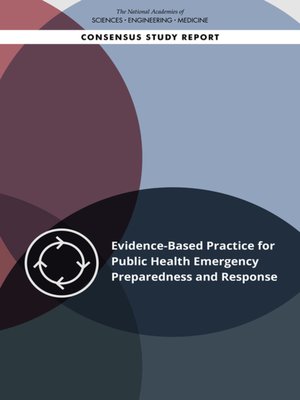Evidence-Based Practice for Public Health Emergency Preparedness and Response
ebook
By National Academies of Sciences, Engineering, and Medicine

Sign up to save your library
With an OverDrive account, you can save your favorite libraries for at-a-glance information about availability. Find out more about OverDrive accounts.
Find this title in Libby, the library reading app by OverDrive.



Search for a digital library with this title
Title found at these libraries:
| Library Name | Distance |
|---|---|
| Loading... |
When communities face complex public health emergencies, state local, tribal, and territorial public health agencies must make difficult decisions regarding how to effectively respond. The public health emergency preparedness and response (PHEPR) system, with its multifaceted mission to prevent, protect against, quickly respond to, and recover from public health emergencies, is inherently complex and encompasses policies, organizations, and programs. Since the events of September 11, 2001, the United States has invested billions of dollars and immeasurable amounts of human capital to develop and enhance public health emergency preparedness and infrastructure to respond to a wide range of public health threats, including infectious diseases, natural disasters, and chemical, biological, radiological, and nuclear events. Despite the investments in research and the growing body of empirical literature on a range of preparedness and response capabilities and functions, there has been no national-level, comprehensive review and grading of evidence for public health emergency preparedness and response practices comparable to those utilized in medicine and other public health fields.
Evidence-Based Practice for Public Health Emergency Preparedness and Response reviews the state of the evidence on PHEPR practices and the improvements necessary to move the field forward and to strengthen the PHEPR system. This publication evaluates PHEPR evidence to understand the balance of benefits and harms of PHEPR practices, with a focus on four main areas of PHEPR: engagement with and training of community-based partners to improve the outcomes of at-risk populations after public health emergencies; activation of a public health emergency operations center; communication of public health alerts and guidance to technical audiences during a public health emergency; and implementation of quarantine to reduce the spread of contagious illness.







